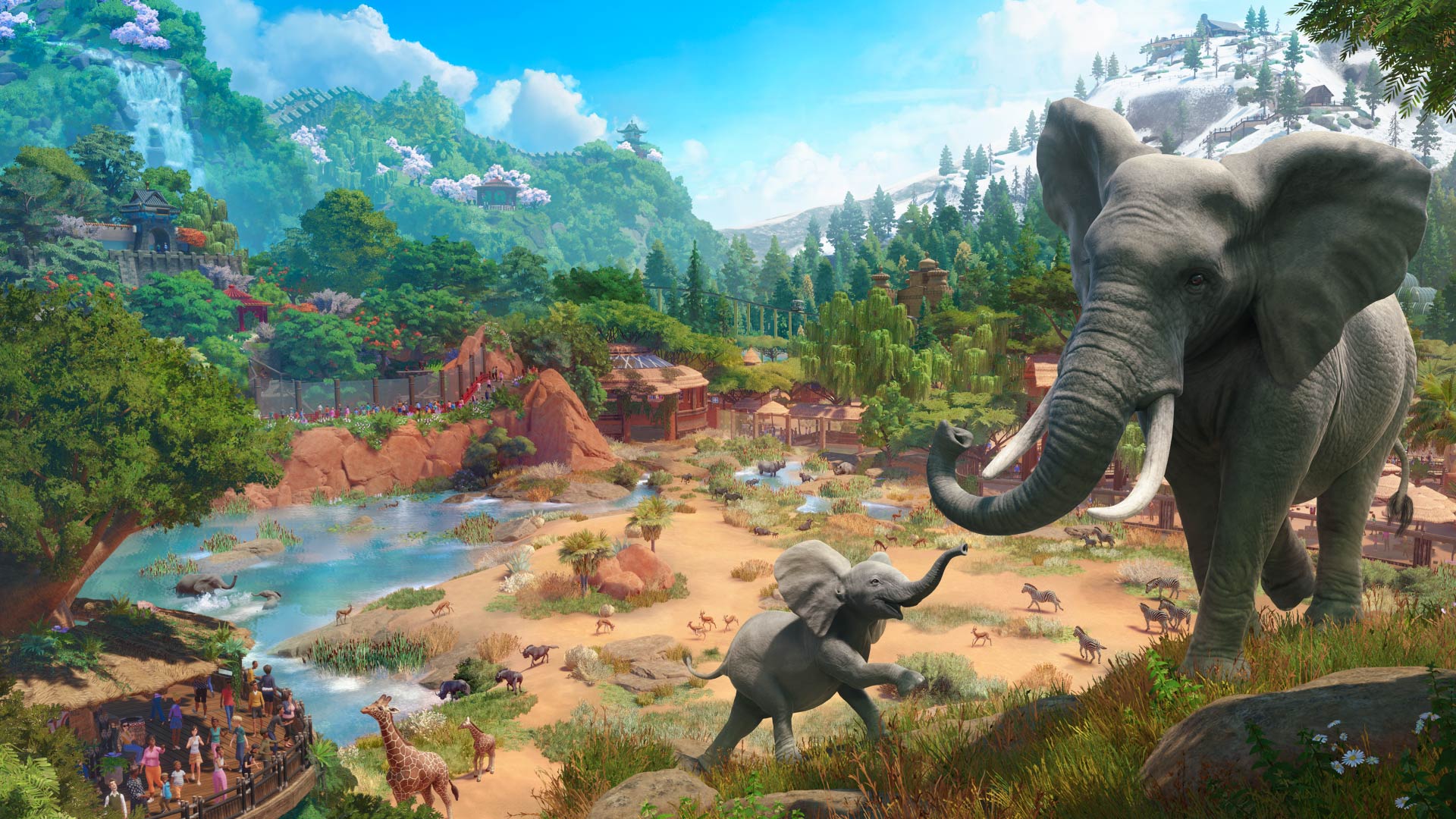Build a world for wildlife with Planet Zoo: Console Edition. From the developers of Planet Coaster and Zoo Tycoon, the ultimate zoo simulator is arriving on console. Planet Zoo brings controller support that puts powerful creative tools at your fingertips and includes years’ worth of features, content, and animals from the celebrated PC video game’s free updates.
Planet Zoo: Console Edition features an incredible array of authentic animals who think, feel, and explore the world you design around them. Create unique habitats and vast landscapes, and make meaningful choices to nurture animals as you construct and manage the world’s wildest zoos using intuitive console controls. Pick up and play across four engaging game modes: embark on a globe-trotting campaign in career mode, build a network of connected zoos in Franchise mode, put your skills to the test in Challenge mode, or let your imagination run wild in the freedom of Sandbox mode.

Build a world for wildlife with Planet Zoo: Console Edition. From the developers of Planet Coaster and Zoo Tycoon, the ultimate zoo simulator is arriving on console. Planet Zoo brings controller support that puts powerful creative tools at your fingertips and includes years’ worth of features, content, and animals from the celebrated PC video game’s free updates.



Binturong
The binturong, also known as the bearcat, is a species of mammal that lives in the forests of South and South-East Asia. It has a long, stocky body with comparatively short broad legs. They have wiry black hair with a brown face and white-tipped rounded ears. Females are approximately 20% larger than the males. The binturong has a head-body length of 71-91cm, and a tail length of 56-91cm. The males weigh between 9-20kg and the females weigh between 11-32kg.
Babirusa
The North Sulawesi babirusa is a species of pig native to the Sulawesi island of Indonesia and several small surrounding islands. The North Sulawesi babirusa is mostly hairless with grey skin. Male babirusas have four large tusks that curl back towards their skull. The North Sulawesi babirusa has a head-body length of 85 to 110cm, a tail length of 29 to 32cm and a shoulder height of 58 to 66cm. Male babirusas weigh between 70 and 100kg and female babirusas weigh between 45 and 80kg.
Diamondback Terrapin
The Northern diamondback terrapin is a small species of turtle that lives in the brackish and coastal swamps of the Eastern and Southern United States of America. It is characterized by its distinctive shell pattern of interlocking ‘diamonds’ that tend to have concentric light and dark rings within them. However, pattern and coloration does vary within the species. The average shell length of males is 13cm, whereas the average shell length of the female is 17cm.
Cuvier's Dwarf Caiman
Cuvier's dwarf caiman is a small species of crocodilian that inhabits in the rivers and swamps in the forests of northern South America. The appearance of this species changes as it matures. Caimans have large protruding brown (although occasionally yellow) eyes. Males are an average of 1.3-1.5m in length while females are an average of 1.15m in length. They usually weigh between 6-7kg.
Grey Seal
The Atlantic grey seal is a species of marine mammal that lives around the landmasses of the Atlantic Ocean (UK, Ireland, Iceland, Norway, Denmark, France, Netherlands, Belgium, Germany, Sweden, Finland, Estonia, Latvia, Lithuania, Poland, Russia, Canada, USA). Western Atlantic grey seals are significantly larger than the Eastern Atlantic morph. Their males measure between 2.3 and 2.9m in length and weigh 205-370kg, while females measure between 1.9-2.3m in length and weigh 160-250kg.
Giant Otter
The giant otter is a large semi-aquatic mammal that lives in the Amazon river basin and the Pantanal wetlands of South America. The giant otter has thick, velvet-like brown fur with distinctive white markings around its throat. Giant otters have large, webbed feet and a wing like tail adapted for swimming. Male and female giant otters do not differ in size and are typically between 150 and 180cm long, though they vary in weight. Males weigh 26 to 32kg, while females are slightly lighter with 22 to 26kg.
King Penguin
The king penguin (or Aptenodytes patagonicus patagonicus) is a large species of marine bird that lives in the Southern Ocean and breeds on sub-Antarctic islands including the Falklands and South Georgia. King penguins have dark grey feathers on their backs and flippers, white feathers on their chests and stomachs, and yellow colouration on their throats, while their heads are black, with bright orange cheek patches, as well as an orange streak along their beaks.
Aquatic Pack
Expand your zoo into a marine menagerie with Planet Zoo's Aquatic Pack!
Introduce five magnificent new animals, including impressive King Penguins, gorgeous Grey Seals, and playful Giant Otters. Make them feel at home by constructing beautiful habitats from over 120 new scenery pieces, including jungle-inspired rivers and polar bays. Master a brand new challenge zoo set in Oregon, USA and put your zookeeper skills to the test.
Dive in and make a splash today!
Arctic Pack
Join Bernie Goodwin on an epic Arctic adventure and explore new challenges, animals, and more! Alongside two new Scenarios in which you face new challenges as a zoo manager, there are four new animals and over 200 scenery pieces to make your parks as cool as ice.
Giant Forest Scorpion
The giant forest scorpion (or Heterometrus swammerdami titanicus) is a large species of arachnid that lives in the tropical rainforests of India and Sri Lanka. It’s a stout, black coloured animal with thick chitinous body plates and very large pincers. It may also have a blue or green sheen to its cuticle. The giant forest scorpion’s pincers are strong and capable of catching and crushing prey, whereas its venom is relatively weak; most likely because it relies more on the strength of its pincers than the potency of its sting.